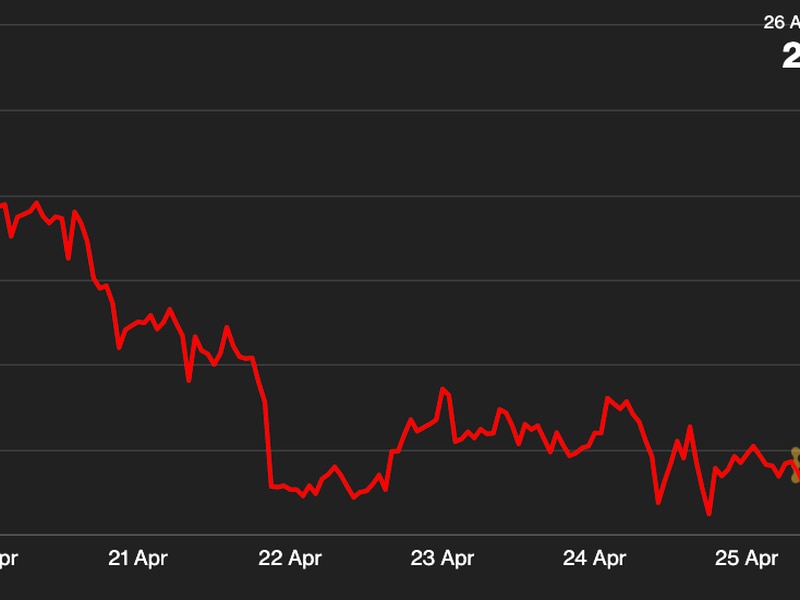Bitcoin’s Crash Triggers Over $700M in Liquidations on BitMEX
Arthur Hayes, CEO of BitMEX, at CoinDesk Consensus 2018
Bitcoin’s Crash Triggers Over $700M in Liquidations on BitMEX
Bitcoin’s (BTC) flash crash on Thursday triggered the most long-short liquidations on crypto derivatives exchange BitMEX in 16 months.
The top cryptocurrency by market capitalization fell from $7,200 to a 10-month low of $5,678 in just 15 minutes at around 10:45 UTC, catching most traders off guard and forcing liquidations worth $702 million on BitMEX. That’s the highest amount since Nov. 14, 2018, according to crypto derivatives research firm Skew.

The price drop triggered $698 million worth of sell liquidations and $4 million worth of buy liquidations.
The Seychelles-based exchange had registered total liquidations of $750.8 million on Nov. 14, 2019, when bitcoin’s price dropped sharply from $6,000 to levels below $5,000.
A sell liquidation on BitMEX occurs when the market moves adversely against a long position (a bullish bet) and breaches the liquidation price – a predetermined limit. When that happens, the liquidation engine closes down the long position automatically.
Sell liquidations represent forced unwinding of long positions, while buy liquidations represent forced unwinding of short positions.
Long squeeze
While both long and short positions have been liquidated, more than 90 percent of the liquidations are of long positions. It indicates the leverage was heavily skewed to the bullish side.
A sudden price drop almost always results in a long squeeze, which in turn adds to the downward pressure around the cryptocurrency, leading to an exaggerated price drop.
Bitcoin’s quick slide to 10-month lows below $5,700 was followed by a temporary recovery, which saw prices rebound to $6,700. At press time, bitcoin is changing hands just below $6,000, representing a 24 percent slide on a 24-hour basis.
“We believe there is a strong support in this area,” Joel Kruger, currency strategist at LMAX Group, said in a statement, while adding further that “players who were committed ahead of the late 2017 rally would be happy to increase their exposure now in anticipation of bitcoin realizing its objective of being a safe haven and store of value.”
So far, the cryptocurrency has not found love as an anti-risk asset. In fact, the recent drop from $10,500 to $5,700 has been an accompaniment of the deteriorating global outlook and a sell-off in the global equity markets.
Volatility rises
With the big price move, bitcoin’s implied volatility on three-month options has jumped to 3.9 percent on a daily basis (74.5 percent on an annualized basis) – the highest level since Jan. 9.

Implied volatility is a measure of how risky or volatile an asset is expected to be in the future. Volatility has a positive impact on options prices. The higher the uncertainty (volatility) the stronger the hedging demand is for both call and put options.
The spike in three-month volatility essentially means traders are now expecting bitcoin price volatility to remain elevated over the next 12 weeks or so.
Ether drops
As bitcoin’s price crashed, the price of ether (ETH), the world’s second-largest cryptocurrency by market value, fell to a two-month low of $128. At press time, ether is trading at $137, down 30 percent on the day.

Ether’s price slide triggered liquidations worth $32 million on BitMEX – the highest since April 2, 2019, when a strong bullish move forced liquidations worth $33.3 million. A similar spike in liquidations occurred during Sept. 25’s double-digit price slide.
Disclosure Read More
The leader in blockchain news, CoinDesk is a media outlet that strives for the highest journalistic standards and abides by a strict set of editorial policies. CoinDesk is an independent operating subsidiary of Digital Currency Group, which invests in cryptocurrencies and blockchain startups.









